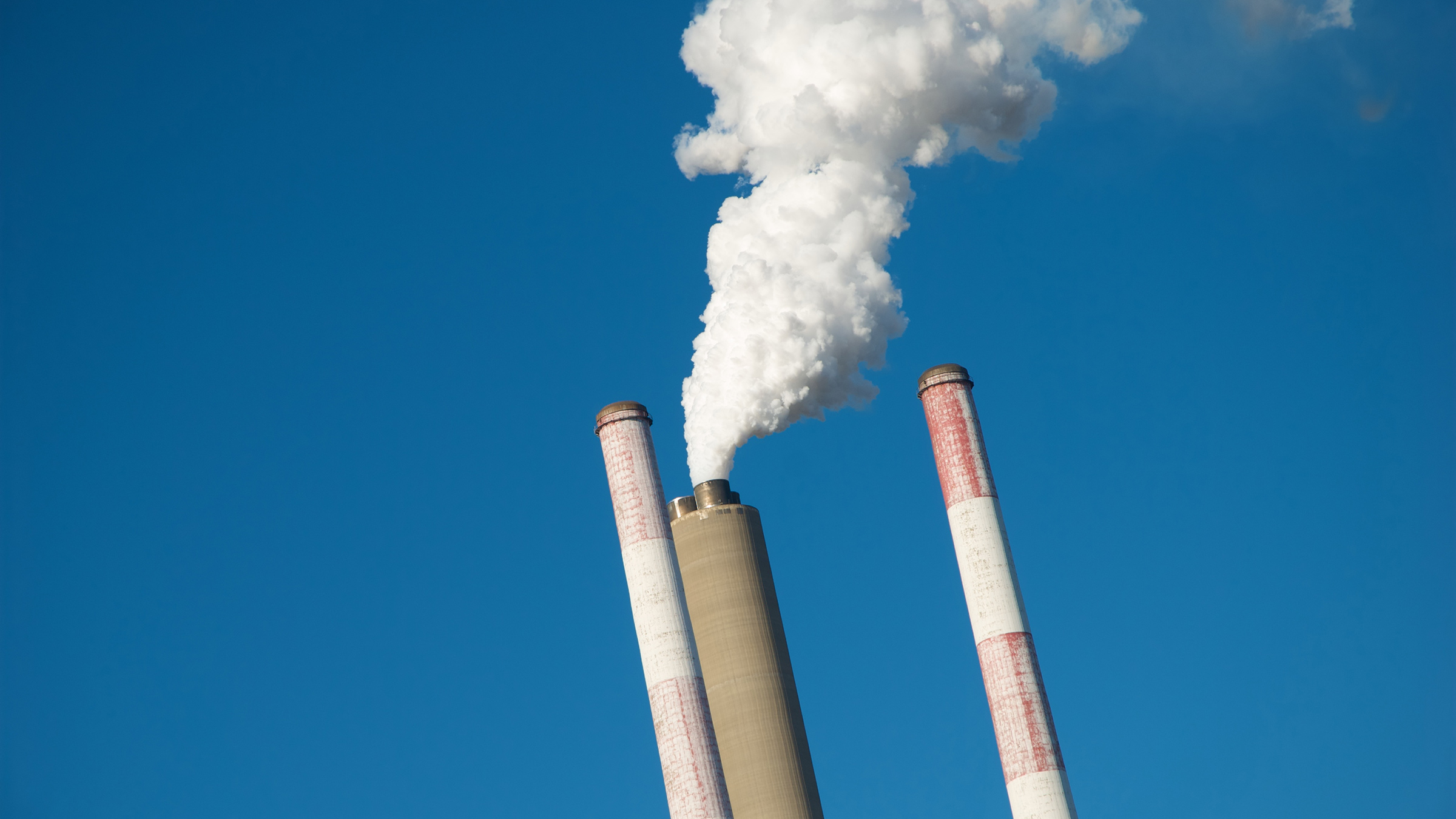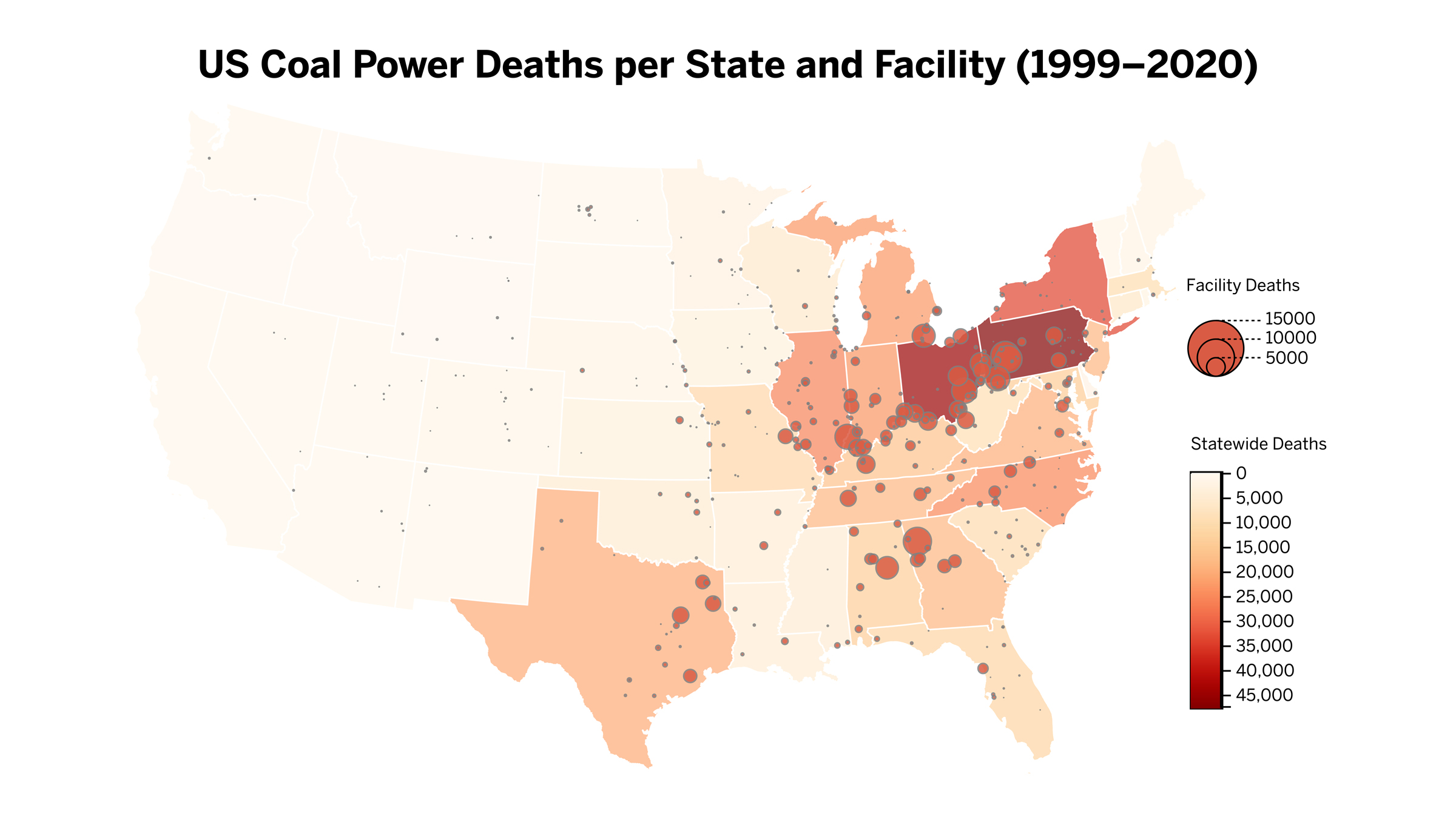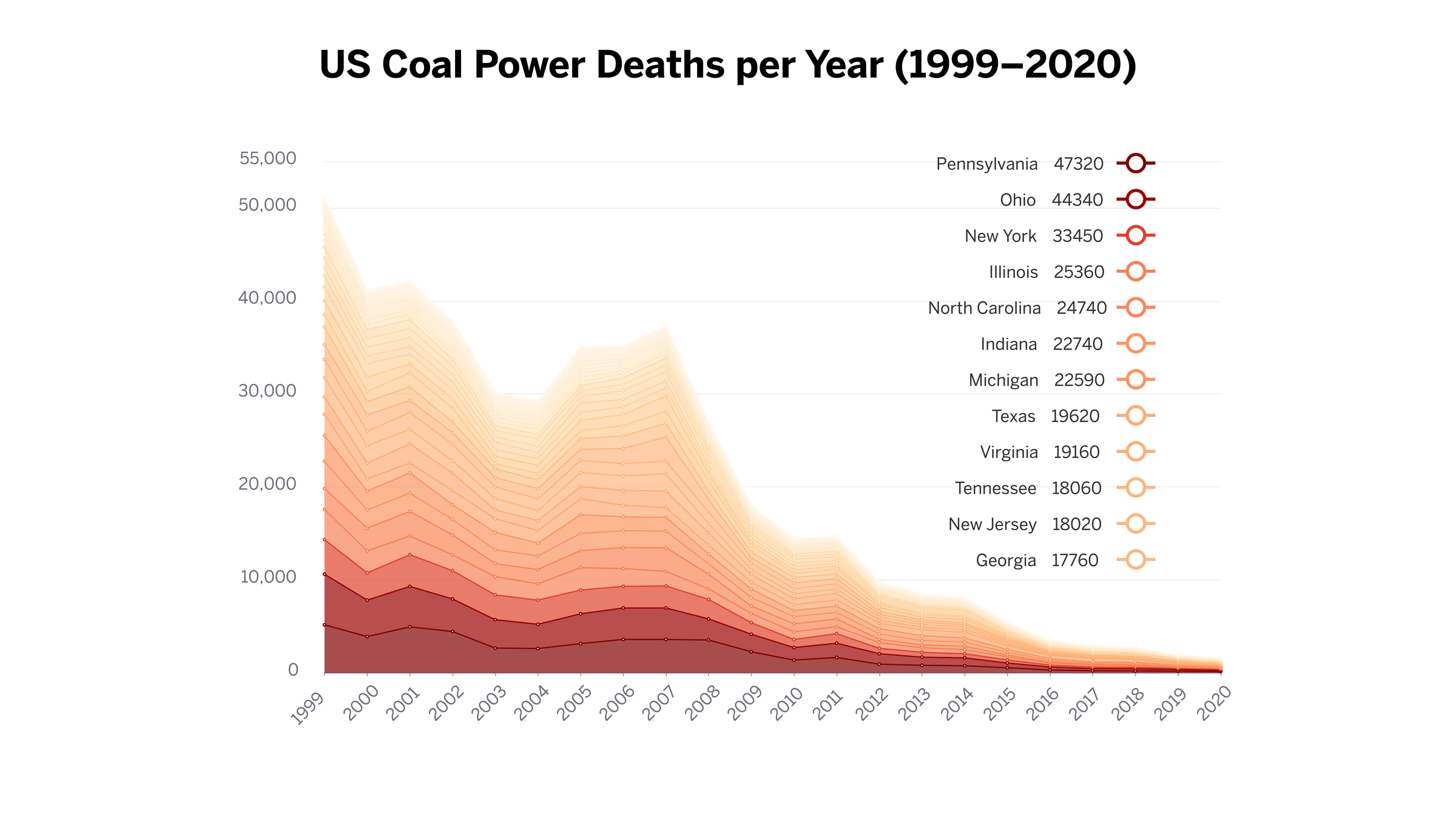Coal Power Killed Half a Million People in U.S. over Two Decades
Deaths from coal were highest in 1999, but by 2020 decreased by about 95%, as coal plants have installed scrubbers or shut down.

From 1999–2020, approximately 460,000 deaths in the Medicare population were attributable to coal electricity-generating emissions in the U.S., according to a new study.
It’s no secret that small particles in the air from coal-fired power plants are harmful, but a new paper published in Science shows these particles are more than twice as harmful as previously thought. In fact, since 1999 coal-fired power plants in two states—Ohio and Pennsylvania—caused more than 103,000 deaths nationwide.
A team of researchers from six universities, including The University of Texas at Austin, examined data from the United States’ 480 coal-fired power plants and found that from 1999–2020, approximately 460,000 deaths in the Medicare population were attributable to coal electricity-generating emissions, a number far higher than previous estimates. The researchers also ranked coal plants and found the 10 deadliest were each associated with more than 5,000 deaths. The research does not account for any additional deaths among individuals under age 65 or among uninsured people.
Senior author Cory Zigler, an associate professor in UT’s Department of Statistics and Data Sciences and founding member of the UT Center for Health & Environment: Education and Research, conceived of the overall analysis strategy of developing a new air quality model and deploying it for large-scale epidemiological studies. He noted one bit of good news: Deaths from coal were highest in 1999 but by 2020 decreased by about 95%, as coal plants installed scrubbers or shut down.
“I see this as a success story,” Zigler said. “Coal power plants were this major burden that U.S. policies have already significantly reduced. But we haven’t completely eliminated the burden. So, this study provides us a better understanding of how health will continue to improve and lives will be saved if we move further toward a clean energy future.”
For example, deaths from the Keystone power plant in Pennsylvania averaged over 600 per year before emissions scrubbers were installed, and dropped to below 100 deaths per year after that. Spurred by EPA regulations and progressively cheaper alternatives to coal, such as natural gas, coal facilities across the country achieved similar successes.
“Fine particle air pollution from coal has been treated as if it’s just another air pollutant, but it’s much more harmful than we thought and its mortality burden has been seriously underestimated,” said lead author Lucas Henneman, an assistant professor of environmental engineering at George Mason University.
This work shows that cutting emissions from coal power plants can save lives in downwind communities.

This map indicates the number of deaths among U.S. seniors attributable to coal-fired power plants from 1999-2020, by state and by facility. Visualization from the Coal Pollution Impacts Explorer, created by co-author Jessica Roberts: https://cpieatgt.github.io/cpie/
Deaths from each power plant happened both nearby and farther away, as can be visualized with an online tool created by co-author Jessica Roberts, assistant professor in the College of Computing at the Georgia Institute of Technology. The tool shows, for example, that coal-fired power plants operating inside Texas caused 27,000 deaths nationwide during the study period, the majority of them outside of the state’s borders. Other state’s power plants also caused deaths within Texas, though: Of the 19,600 Texans who died between 1999 and 2020, 10,880 of the deaths could be attributed to Texas power plants, while the remainder were linked to power plants in other states.
The team used publicly available data to track coal pollution and its effects over time. Approximately 480 coal power plants operated in the U.S. at some time from 1999 to 2020, and all of them are required to report their sulfur dioxide emissions to the EPA.
The researchers used a model to track which way the wind was taking the sulfur dioxide from each individual coal power plant, often hundreds of miles, and how atmospheric processes converted the sulfur dioxide into fine particles less than 2.5 microns (one millionth of a meter) wide, known as PM2.5. These data were aggregated to produce annual exposure fields from each power plant. By linking coal emissions exposure to where Medicare beneficiaries lived and when they died, the researchers found that risks due to PM2.5 from coal were more than double the risks related to PM2.5 from all sources.

Spurred by EPA regulations and progressively cheaper alternatives to coal, like natural gas, pollution from coal-fired power plants has fallen dramatically in recent years. This trend is associated with a drop in annual coal-power deaths among U.S. seniors. Visualization from the Coal Pollution Impacts Explorer, created by co-author Jessica Roberts: https://cpieatgt.github.io/cpie/
“As countries debate their energy sources—and as coal maintains a powerful, almost mythical status in American energy lore—our findings are highly valuable to policymakers and regulators as they weigh the need for cheap energy with the significant environmental and health costs,” said co-author Francesca Dominici, a professor of biostatistics, population and data science at Harvard Chan School and director of the Harvard Data Science Initiative.
The work was funded by the EPA, the National Institutes of Health, the EmPOWER Air Data Challenge, the Alfred P. Sloan Foundation and the Health Effects Institute.



